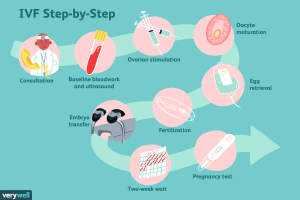Introduction
Embarking on the journey of building your family is a unique and personal goal. Secondary Infertility At our center, we recognize the diversity of family aspirations and are dedicated to collaborating with you to turn your vision into reality.

Understanding Secondary Infertility
The joy of having your first child may lead to assumptions about an easy path to a second successful pregnancy. However, for many, the reality of secondary infertility sets in, leaving individuals and couples grappling with the challenges it presents. This phenomenon, defined as the inability to conceive or carry a baby to term after previously giving birth, affects millions of parents, as highlighted by the National Center for Health Statistics.
Even with the presence of a child, the emotional toll of secondary infertility is profound. Our commitment is to acknowledge and address the unique desires you have for your family, whether it involves one child, two children, or more. We stand ready to work collaboratively to bring your family-building goals to fruition.

Causes of Secondary Infertility
Understanding the factors contributing to secondary infertility is crucial. Both women and men can experience challenges, including:
- Advanced Maternal Age: Women aged 35 and older may face increased difficulty in conceiving.
- Impaired Sperm Production: Men may encounter issues with sperm production or low sperm count.
- Fallopian Tube Damage: Structural issues such as damaged fallopian tubes can impede conception.
- Endometriosis and Uterine Conditions: Conditions affecting the uterus, like endometriosis, play a role.
- Polycystic Ovary Syndrome (PCOS): Hormonal imbalances, such as PCOS, can contribute.
- Lifestyle Factors: Excessive weight gain, smoking, and heavy alcohol use can impact fertility.
- Certain Medications: Some medications may affect fertility.
In approximately 1 in 5 cases, secondary infertility is labeled as unexplained, posing an additional layer of complexity.

Testing for Secondary Infertility
Diagnostic procedures for secondary infertility mirror those used for primary infertility. To explore available diagnostic options, visit Penn Fertility Care.
Treatment Options
Addressing secondary infertility involves a tailored approach. Our fertility specialists guide you through various options, including:
- Fertility Medications: Oral or injectable medications stimulate ovarian follicles, increasing egg release.
- Intrauterine Insemination (IUI): Sperm is strategically placed inside the uterus, enhancing the chances of fertilization.
- In Vitro Fertilization (IVF): The process of combining egg and sperm outside the body offers a comprehensive solution.

Conclusion
In the pursuit of building the family you envision, our commitment is unwavering. infertility may present challenges, but with our experienced fertility specialists, personalized diagnostic procedures, and advanced treatments like IVF and IUI, we empower you to overcome hurdles. Your unique family goals are at the heart of our mission, and together, we strive to turn your dreams into a beautiful reality.




